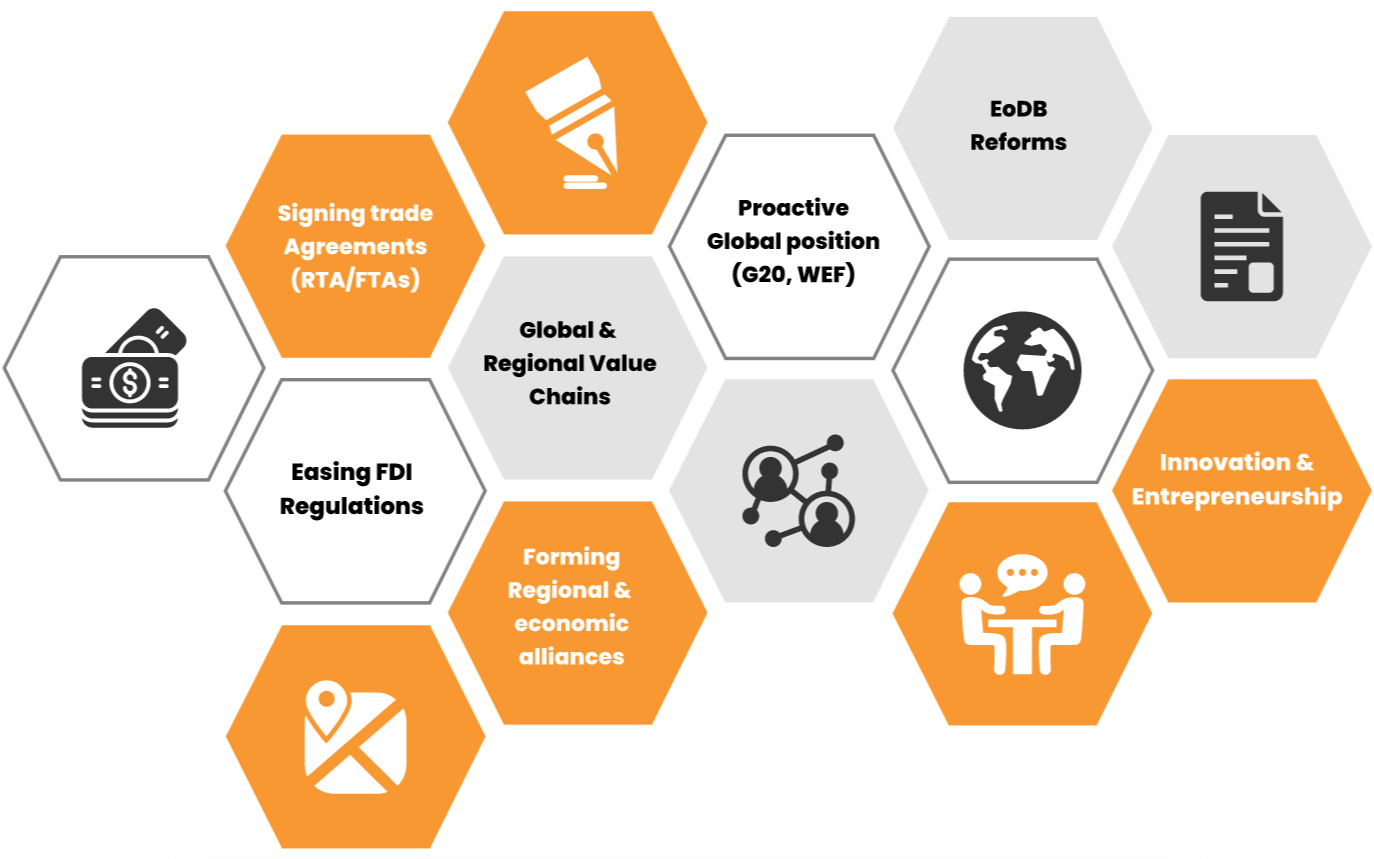Key Growth Drivers
- 8.7% GDP growth in 2021-22.
- Supportive Policy & Regulatory Environment.
- Young & Diverse Market.
- USD 6 trillion domestic consumption by 2030.

Indian economy has seen tremendous growth over the last decade. Currently India is the 5th largest economy in the world with a size of US $3.5 Tn. The Food Processing sector has been a large contributor to this growth. In 2021-22 alone the food processing industry recorded exports worth US $10.42 Bn. A favourable policy and regulatory environment has bolstered a substantial growth in the industry. 100% FDI through automatic route for Food Processing Industries and 100% FDI through government-approval route for retail trading, including through e-commerce have been key drivers for the sector.

#1 Rail Network in Asia (with 1,28,305 kms of railway tracks).
3.5+ Bn Passengers & 1.4+ Bn tonnes of freight carried annually.
#2 Road network globally(with 63,71,847 kms of road network).
37 Km of roads constructed daily, highest recorded historically.
More than 3 Mn MT of cargo handled in 2022.
123+ Mn domestic & 43+ Mn international passengers serviced annually.
1500+ MMTPA handling capacity.
200+ Major & minor ports well connected with road and railway lines.
